The show takes about 2 months of weekends to set up each year including all the tress up and down the street – we have to create a separate WiFi network that covers the entire street just to run the show. We now also control the light shows at houses in Tampa and Atlanta! Below are some of the hardware and software items that are used to run the show:
Light Controllers
We have two types of controllers in our show – AC Light Controllers, and Pixel Controllers.
AC Light String Controllers
The first controller type is the AC controllers which turn on, turn off, and dim regular light strings that you typically see in Holiday decorations. Each string of lights is one channel since they all turn on or off together. We use LED light strings similar to what you would find on sale at your local store.

In 2107 we used a single Light-O-Rama 16-channel AC controller to do everything. That controller is now in use by a neighbor to run their lights in sync with ours. We also built a Renard TR-24 (24-channel) controller (shown above) that has since been sent to Tampa for use in their show. This was a great way to show our boys how to (and how not to) solder electronics!
In 2020 we decided to work with our neighbors (who are awesome) to light up the trees up and down the street. To do this we could have gone with commercial controllers, but the cost would have been insane. So, in order to make the magic work we decided to design and create our own mini WIFI light controller!

The controller pictured above is the one we designed and built in 2019. It has 4 channels that we configure to use on the tree trunks (two channels) and in the branches (two channels). Each house down the street that is participating has one of these controllers placed inside a PVC tube and attached to the tree. It sits on our show network and receives data from a long-range wireless network using ubiquity Nanostations and wireless routers.
The next issue we had was to get a signal across the street without running ethernet cables. For this we had to design and create yet another solution – The WiFi adapter for LOR boards. This converts all of our Light-O-Rama boards to WiFi – no more need to have ethernet cables!

Pixel Controllers
The second controller type is for the pixels which comprise the majority of our display. Each pixel can be set to virtually any color at any time. That is how we are able to get designs and shapes to run across the entire face of the house.
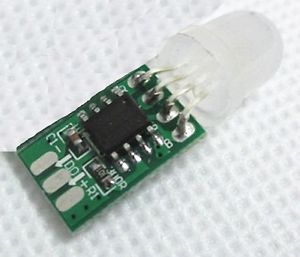
To control these pixels we had to use a controller board that is very different from the AC controllers above. In addition, the pixels run off of 12-volt or 5-volt power supplies instead of just plugging them into the outlets. We chose to use two Falcon F16V3 controllers The initial setup is shown in the photo below (but it has since been modified heavily to include many more components.
The actual pixels that are on the props are shown to the left and are relatively small. Each is about 12 millimeters in diameter.
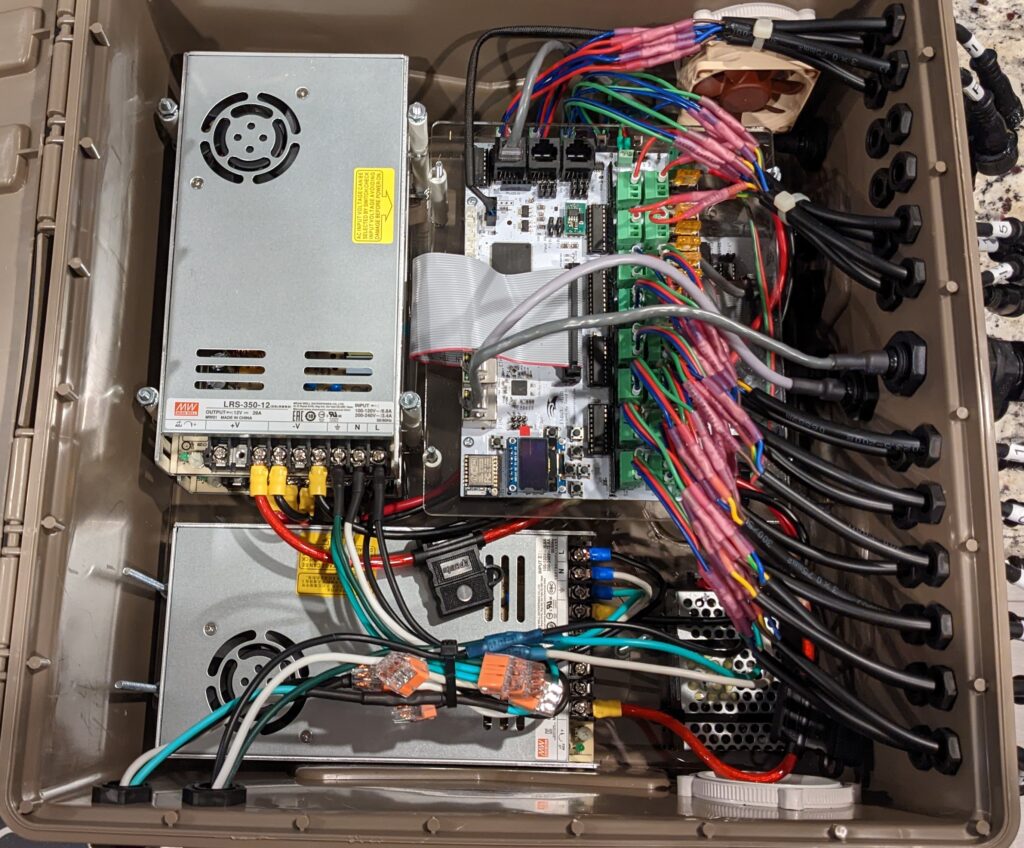
LED Wands

In 2019 we will decided to test out LED Wands that are controlled by the show. It was a great success, and we have kept these as a part of the show each year since. This fun addition allows kids of all ages to become a part of the show. Lots of kids like to dance in the driveway with their wands when it snows! Oh, did we mention that there is snow too?
Snow
We decided to add some more interactive fun to the show with Snow in 2020! Visitors can use their mobile devices to create a “snowstorm” at the light show! The snow will blow for about 15-30 seconds followed by a 5-minute delay. We even put nice scents into the fluid so the snow smells nice. Not enough to sled on yet, but it is still fun!
Computers
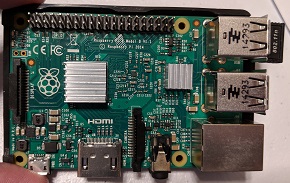
So, how big is the computer that runs all of this? Well, it’s about the size of a credit card! Our main computer is a Raspberry Pi 3B+, and we have multiple Raspberry Pi computers running throughout the display – One runs our projector in the window, one runs the TV in the front yard, and there are two more running the lights at a couple of neighboring houses!
Software
xLights
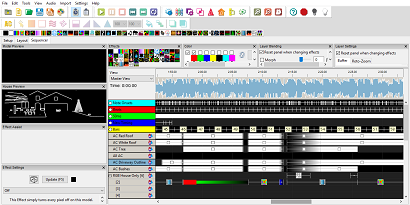
How do you program 200,000+ individual channels without going mad? We use some great open-source software called xLights. Within this we are able to load up any mp3 song and then sequence the effects that control the AC lights, pixels, projectors, and wands. Each song takes between 8-12 hours to sequence, so you get to hear each song over and over and over and OVER!!!!
Falcon Pi Player
Once the sequences are created we load them up to the Raspberry Pi which runs Falcon Pi Player (FPP) software. This software allows us to set a schedule, do automation of notifications to email, slack, MQTT, Home Assistant, etc. Once we set it up, it runs on its own and automatically turns all of the controllers on, runs the show, then turns everything off. We just sit back and watch with everyone else!

Home Assistant, MQTT, Hubitat, and Node Red
We do not leave everything running all day every day. Only the Raspberry Pi computers and the Falcon Controllers Stay on. So how do we get everything to turn on and update us on any issues? We use the main Raspberry Pi to do all the work. It sends MQTT topics that our various platforms subscribe to. With this we can turn on all of the other controllers and power supplies when needed, let users run the snow machine, turn on the outdoor speakers, and enable/disable user requesting of new songs. We have a mix of systems to enable this including Home Assistant and Hubitat for some of the automation pieces, Mosquitto for our MQTT broker, and Node Red for the rule flows.
Website
For the website we are running WordPress in docker. Within the site we use webhooks on the various pages to control the snow and speakers directly from the site. Hubitat and Home Assistant then use rules on their in to confirm if the webhook was triggered at the correct time or is outside of the allowed timeframe… that way it is not snowing all day long!
For the song control we use a custom webpage setup and the Remote Falcon plugin within our controller software. This allows you to request the next song and control the entire show! When no requests are playing our standard song list runs in a loop until the next request.
FM Transmitter
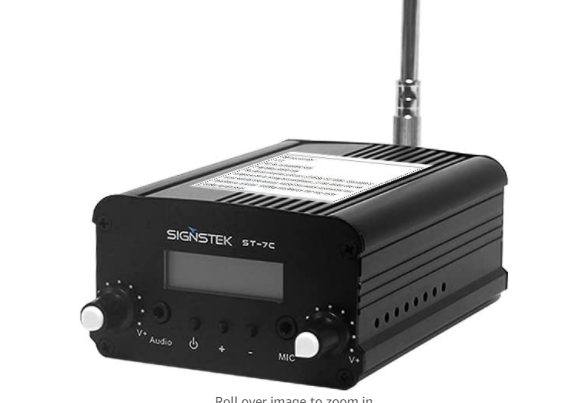
A very important part of the show is being able to get the sound from the controller to the viewer. The best way to do this without angering the neighbors is to use an FM transmitter so that observers can listen in their cars (we already have flashing lights, so we don’t want to push it with blaring music). We created our own dipole antenna that allows us to transmit the length of the street. THANK YOU NEIGHBORS IF YOU ARE READING THIS!
Want to learn more?
Check out our How It Works page for even more information!